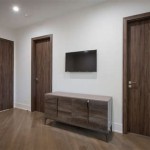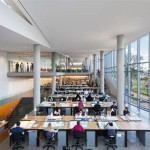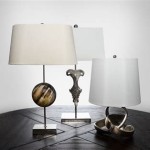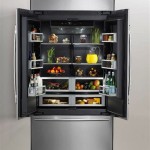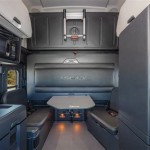Creating a Functional and Inspiring Office Design Interior
The design of an office interior plays a crucial role in fostering productivity, creativity, and employee well-being. By carefully considering essential aspects, businesses can create a workplace environment that supports their goals and enhances the overall experience for employees and clients alike.
Here are some essential aspects to keep in mind when designing an office interior:
1. Functionality and Ergonomics
Functionality should be the foundation of any office design. The layout should facilitate smooth workflow and minimize disruptions. Ergonomic considerations are vital to ensure employee comfort and health. Use furniture that provides proper support for prolonged sitting, such as adjustable desks and chairs. Ample storage space helps keep the workspace organized and clutter-free.
2. Lighting and Acoustics
Natural lighting can significantly improve employee well-being and productivity. Maximize window space and consider installing skylights or light shelves to bring natural light into the interior. Artificial lighting should be well-balanced, combining ambient, task, and accent lighting to create a comfortable and functional environment. Good acoustics prevent noise distractions and enhance privacy. Consider using sound-absorbing materials in ceilings, walls, and flooring to create a more conducive work environment.
3. Color and Materials
Colors have a psychological impact on mood and productivity. Choose color schemes that promote creativity, focus, and a sense of well-being. Opt for materials that are durable, easy to clean, and visually appealing. Natural materials such as wood and stone bring warmth and a connection to nature. Consider the use of plants to enhance air quality and create a more inviting atmosphere.
4. Technology Integration
Technology plays a vital role in modern office environments. Ensure seamless integration by providing adequate electrical outlets, Wi-Fi coverage, and data infrastructure throughout the space. Consider installing smart home devices to control lighting, temperature, and other office functions. A well-connected workplace enhances collaboration, streamlines communication, and supports flexible work arrangements.
5. Aesthetics and Branding
The office design should align with the company's brand identity and aesthetic values. Incorporate elements of the brand, such as logos, colors, and typography, throughout the interior to create a cohesive and professional environment. Consider commissioned artwork or custom-designed furniture to add a touch of uniqueness and enhance the overall visual appeal.
6. Creating a Welcoming Atmosphere
The office environment should be welcoming to both employees and clients. Create a designated reception area that conveys a sense of professionalism and warmth. Provide comfortable seating and amenities in common areas to encourage social interaction and collaboration. Consider offering a variety of workspaces, including collaborative zones, private offices, and quiet nooks, to accommodate different work styles and preferences.
7. Sustainability
Incorporating sustainable practices into the office design demonstrates a commitment to environmental responsibility. Choose energy-efficient lighting systems, water-saving appliances, and eco-friendly furniture made from recycled materials. Consider natural ventilation options, such as operable windows or stack effect ventilation, to reduce energy consumption. By adopting sustainable measures, businesses can create a healthier and more environmentally friendly workplace.
8. Maintenance and Adaptability
Regular maintenance is essential to keep the office interior looking its best and functioning optimally. Establish a plan for cleaning, repairs, and upgrades to ensure a comfortable and safe work environment. The design should also be adaptable to changing needs and advancements in technology. Consider using modular furniture and flexible workspaces that can be easily reconfigured to accommodate future growth or operational shifts.
By considering these essential aspects, businesses can create an office design interior that fosters productivity, creativity, employee well-being, and a positive brand image. A well-designed office not only enhances the work experience but also serves as a valuable investment that can contribute to the success and growth of the organization.

11 Modern Offices Interior Design Ideas Innovative Building Materials

The 7 Best Materials For A Modern Office Interior Design

Essential Checklist For Your Office Interior Design Decorilla

Office Interior Design Considerations Hatch
Office Interior Design 6 Best Ideas Architecture

Explore The Offices Of Top Interior Designers And Architects

10 Best Office Interior Design Services In 2024 Decorilla

Best Office Interior Design Modern Small

Office Interior Design Types Blog High Street

Top 10 Office Interior Design In The Architects Diary


